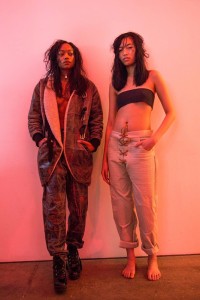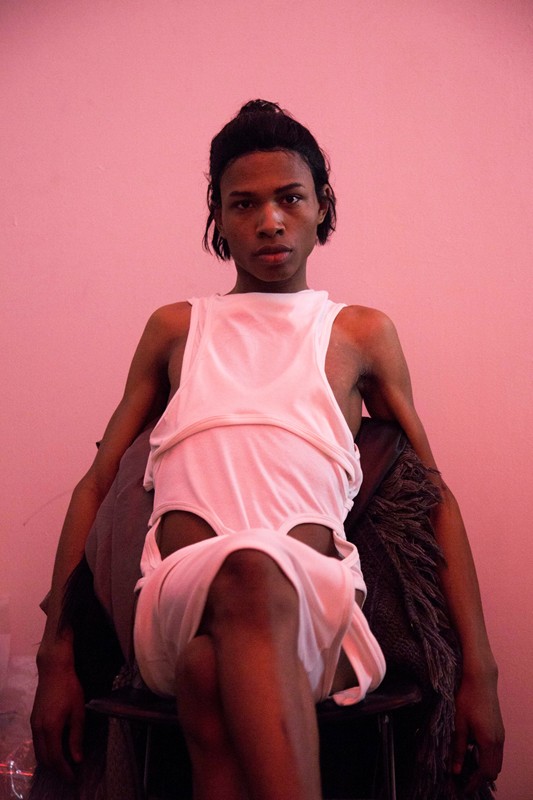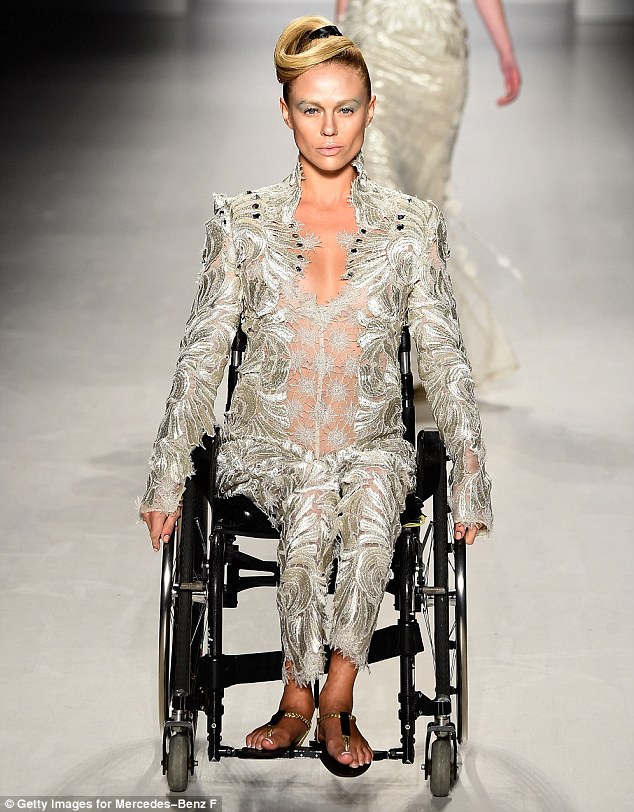 The latest season of Fashion Week runway models have opened new doors in both the world of fashion and in the minds of people everywhere. Contradictory to regular models seen marching down the catwalk, often fixed in the nameless, faceless game of conformity and selected to make the designer’s garments the feature; many of this year’s models have been chosen specifically to stand out in their differences. Designers and show producers have been making deliberate social statements using these models and have been drawing in enormous amounts of attention and publicity because of it. There is a strong feeling of acceptance of the “real world” and all types of humans that live in it.
The latest season of Fashion Week runway models have opened new doors in both the world of fashion and in the minds of people everywhere. Contradictory to regular models seen marching down the catwalk, often fixed in the nameless, faceless game of conformity and selected to make the designer’s garments the feature; many of this year’s models have been chosen specifically to stand out in their differences. Designers and show producers have been making deliberate social statements using these models and have been drawing in enormous amounts of attention and publicity because of it. There is a strong feeling of acceptance of the “real world” and all types of humans that live in it.
The portrayal of individuals and minority groups within the fashion industry has become less of a fad and more about realistic representation of a sub-culture.
The latest ‘it-girl’ on the runway this season is Canadian born Chantelle Young-Brown (also known as Winnie Harlow). Discovered by Tyra Banks on Instagram and later competing in the hit show America’s Next Top Model’s 21st season, the twenty-year-old has been creating a brand name for herself due to her unique skin condition, vitiligo.
Vitiligo is a chronic illness that affects the skin’s pigmentation, leaving skin cells unable to produce colour. It is the same rare condition that Michael Jackson suffered, however unlike the King of Pop, Chantelle has been embracing her beautifully unique “patchwork” skin. Young-Brown was diagnosed with the condition as a young child and says that growing up was “really tough” and was called names such as “zebra” or “cow.” She has since learned to love herself and the skin she is in, saying, “I wish I could ensure that little girl that things would get better, and everything would work out,” (via Instagram).
The model’s beautiful symmetry and refreshing attitude has landed her some of the industry’s top runways at Toronto and London Fashion Weeks. As well as this, she has starred in Sia and Eminem’s new video, “Gut’s over Fear” and has landed herself two major campaigns – Diesel’s new Spring/Summer15 advertorial and Desigual’s Spring/Summer15 campaign entitled ‘Say Something Nice’.
Chantelle’s individuality has created her success in the industry. People with skin conditions of all types are a mostly unrepresented community within fashion culture, and Chantelle Young-Brown has provided a role-model to look towards.
A similar situation has applied in the Temperley London runway at London Fashion week this season. Temperley has used visibly pregnant models on the runway, which contrasts with the usually petit sized models at Fashion Week. It could be argued by cynics that using these models as a novelty is simply a marketing scheme to draw attention to their own brand through social media and publicity.
Despite this, pregnant women are an extremely under-represented group in the fashion world – maternity-wear often being frumpy and unstylish and criticised by pregnant women seeking to stay sophisticated. Temperley’s maternity range is directed towards a nearly un-touched resource of women, and embraces the beauty of pregnancy in real-life.
Big industry names at the moment include Isis King, Hari Nef, Gisele Xtraveganza and Juliana Huxtable. These Trans models have been muses for designers such as Gypsy Sport, 69 Worldwide and Telfar, among others, who are at the forefront of pushing the issue of gender. Model, Hari Nef, said, “Trans people have been central to New York’s art and fashion scene for nearly as long as those ‘scenes’ have existed as we know them. It’s about time that this reality was represented on the city’s runways.” These runways have been described as a ‘celebration of real cultures and communities,’ [Dazed Digital].
Despite the issue of gender being used as a point of difference for these designers, these models have been chosen not because they are Trans but simply because they are now not being discriminated against in the first place. They are chosen by designers for themselves, just as any other model would be. The social statement is not in the gesture itself, but rather in the lack of grandiosity that the movement is receiving. The decision to cast Trans models is purely an accurate depiction of the market that they are designing for. With society developing, so should designs and therefore the models cast to wear them. The designs have become less for a particular gender and more for a particular type of person which the garments appeal to merely aesthetically. Gypsy Sport’s designer, Rio Uribe said, “I want to get past all of that [gender typecasting] and just dress a person.”
Another highly overlooked group in the fashion industry are people with disabilities. This has begun to change, however after the FTL Moda Loving You A/W15 Runway at New York Fashion Week in collaboration with Fondazione Vertical Foundation (which supports research to find a cure for spinal cord injuries).
The runway featured models in wheelchairs as well as the first amputee model ever to walk at NYFW, Jack Eyers who told press, “It all feels so surreal. I can’t believe this is actually happening. To be the first male amputee model on a New York Fashion Week runway feels amazing – it feels like such a big deal. … I just want to show that having a disability doesn’t need to hold you back.”
The new models took to the runway alongside some of the industry’s best runway stars, promoting the idea that disability is often “just a mental state.” The show’s producer, Ilaria Niccolini said, “It is a very significant moment in my fashion career, this opportunity to finally open the most recognised runways in the world to these beautiful talents”
A new generation of designers have been making a deliberate social statement by representing these communities on the runway. By considerably stepping away from standardised models, designers have produced a far more accurate representation of the world we live in today – where barriers of gender, equality and beauty standards have been blurred.













